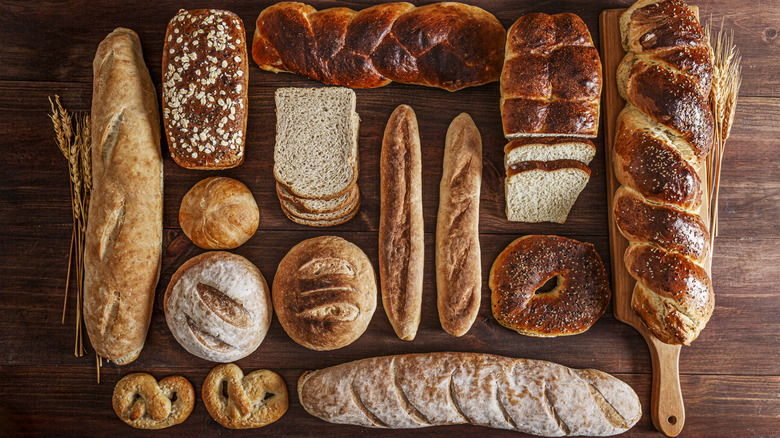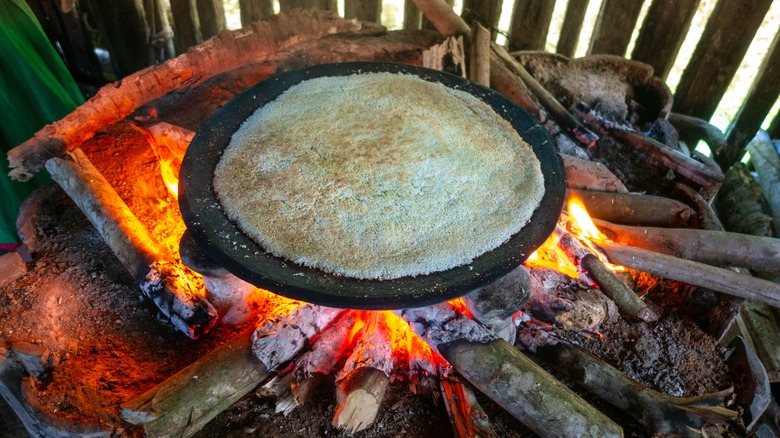Celebrate Indigenous Peoples' Day With This Ancient Bread That Uses Just One Ingredient
Indigenous Peoples' Day is coming up on October 13th. It's a day to remember the world's indigenous populations and celebrate their cultures, making it a perfect time to try traditional recipes from different parts of the world. One in particular is easy to make and only requires a single ingredient, so it's perfect for celebrating the holiday.
Casabe bread is a form of flatbread made using grated yuca root, also known as cassava. It originates from the Caribbean islands, where yuca is a plentiful staple foodstuff. You can process the yuca into flour from scratch, but it's an involved process, and since yuca contains cyanide compounds that make it dangerous to eat raw, you're likely better off using premade cassava flour unless you're already familiar with processing this root. To make traditional casabe, simply mix the flour with water, spread the thin batter on a nonstick pan over medium heat, then cook on each side until it's thin and crispy. Once it's done, casabe can last for months.
You can eat cassava bread on its own, not unlike a cracker, but it's a very versatile food that can be consumed with almost anything. Try it with other traditional Cuban dishes like our mojo chicken recipe, pair it with toppings like fruit or cheese, or serve it with soup. It is very dry, so you're best off pairing it with something with moisture, but other than that, the sky's the limit.
The history of casabe bread
The making and consumption of cassava bread was first recorded in the 14th century, though there's reason to believe it's been around for much longer. Those records say it was made by the indigenous Taíno people of the region, and harvesting the yuca, preparing it, and eating it was a large part of their way of life. It was treated as a communal activity and was even part of religious rituals. When Christopher Columbus and other European sailors arrived in the Caribbean, they integrated it into their diets for its longevity and ease of creation.
Traditionally, casabe was sometimes eaten alone but was also served as an accompaniment to other meals. It's a staple food that was used for most anything and everything, so there's no real "right" way to eat or serve it. Think of it like the homemade tortillas you might find in a Mexican restaurant, only crispier and inflexible.
Cassava bread was officially recognized in 2023 as part of the Intangible Cultural Heritage of Humanity list by UNESCO. Some Cuban restaurateurs still sell casabe made with traditional methods and, in the last few years, have worked hard to spread the tradition and bring this ancient version of bread back into the spotlight.

